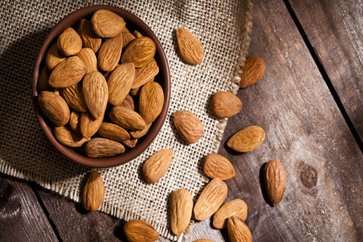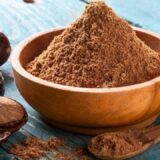How Do I Know My Ayurvedic Skin Type? How To Take Care Of?
In Ayurveda, a lot of attention is paid to skincare. Not surprisingly, the appearance of our skin can be used to diagnose other types of imbalances or diseases that may affect our health and that are more or less hidden.
According to Ayurveda, we can find three basic types of skin, each of them associated with one of the three doshas. Thus, Ayurveda distinguishes between Vata dosha skin type, Kapha dosha skin, and Pitta dosha skin.
Along with these three types of the skin according to Ayurveda, we can find other types of skin that we could call combination skin. These would be the Vata-Pitta, Kapha-Pitta, and Vata-Kapha skins.
What would be the basic characteristics of each of the three types of skin that distinguishes Ayurveda? Those that we are going to learn next.
Vata dosha skin
The Vata dosha is directly related to the concept of energy in motion. That is why when you talk about it you talk about the air. This type of skin according to Ayurveda is characterized by being dry, thin, and cold to the touch.
The Vata skin is skin that, vulnerable to wind and cold environment, dehydrates very easily, so it tends to show fast, rather than other skin types, symptoms, and signs of aging. Most likely, the person who has very wrinkled skin is a person with a Vata skin type.
The skin Vata is a type of skin that tends to show spots and low light. All this is the result, to a large extent, of poor blood circulation. To balance Vata skin, nothing better than improving nutrition.
According to Ayurveda this type of skin dehydrates very easily, hydration will therefore be the main objective when caring for Vata skin. Coconut, almond, sesame, or olive oil, as well as honey or shea butter, are good products to hydrate this type of skin.
Among the nutritional routines that a person must follow when caring for this type of skin according to Ayurveda we can distinguish the following:
- Avoid dry and cold foods such as salads or smoothies.
- Incorporate sauteed vegetables, vegetable creams, and soups into the diet.
- Use spices such as black pepper, ginger, cardamom, cumin, or cinnamon.
- Avoid spices that provide too much heat like cayenne.
- Avoid fried foods.
- Eat figs, dates, watermelon, mangoes, and plums.
- Promote the inclusion of foods that have sour, sweet, and salty flavors in the diet. Among these foods, we can highlight dairy, tomatoes, cheeses, tuna, celery, and the fruits mentioned above.
Finally, the person who has this type of skin according to Ayurveda should avoid the consumption of caffeine and alcohol, as well as nicotine.
Pitta Dosha Skin
In the same way that the Vata dosha is related to the concept of energy in motion, the Pitta dosha is related to transformation and changes. If the first was symbolized and related to the air, the one that concerns us now keeps it with the fire.
What is Pitta skin like according to Ayurveda? This type of skin according to Ayurveda has the following characteristics:
- It burns easily in the sun because it is a very photosensitive skin type.
- You are used to suffering from acne or pimples.
- You can have allergic reactions to certain cosmetic products that contain certain chemical ingredients.
- It usually has a reddish appearance.
- It does not usually react well to heat.
To take care of this type of skin according to Ayurveda, it is necessary to protect it from the sun, wash it with warm water or, better still, cold, and apply essential oils that serve to refresh it.
To act on this type of ayurvedic skin, using food, we will need to eliminate all kinds of food that serve to overheat the body (spicy, fermented, salty, oily, etc.).
We will drink fresh water on a regular basis, we will eat fruits that, such as grapes, pineapple, cherries, or kiwis, combine sour and sweet flavors, and we will increase the intake of foods that, in one way or another, help cool our body. Among these foods, we can easily find watermelon, pears, zucchini, or cucumber.
The person who has this type of skin according to Ayurveda should also avoid acidic foods. He should opt for the use of natural cosmetics in order to avoid possible allergic reactions caused by some chemical cosmetics.
Kapha Dosha Skin
If Vata dosha is of air and Pitta is that of fire, Kapha is that of earth. It is considered, among the three doshas, a cohesive dosha. The Kapha skin is thick, oily skin, which tends to show open pores, and tolerating the sun well, usually shows few wrinkles.
The Kapha skin is tough skin, strong skin that is perfectly protected from the effects of the sun and the environment. Of course: its imbalance causes it to accumulate more toxins and it tends to show its clogged pores.
To balance it, great attention must be paid to cleaning it and controlling excess fat. For this, it is necessary to exfoliate it with natural products once a week and hydrate it with light creams.
To take care of this type of skin, according to Ayurveda, it is necessary to avoid the consumption of red meats, dairy products, fats, and too-sweet desserts.
A hot or warm meal that incorporates spices (ginger, garlic, chili, chilies, etc.) will serve to speed up the metabolism, something essential considering that Kapha has, of all the doshas, the slowest metabolism.

























